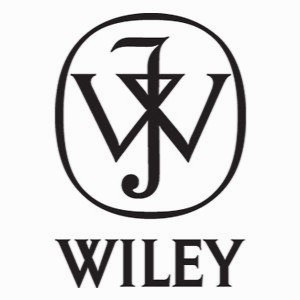جست و جوی تعیین کننده های حسابرسی داخلی: شواهدی از ساختار مالکیت Exploring the determinants of internal audit: Evidence from ownership structure
- نوع فایل : کتاب
- زبان : انگلیسی
- ناشر : Wiley
- چاپ و سال / کشور: 2018
توضیحات
رشته های مرتبط حسابداری
گرایش های مرتبط حسابرسی
مجله بین المللی حسابرسی – International Journal of Auditing
دانشگاه School of Management – University of Tampere – Finland
منتشر شده در نشریه وایلی
کلمات کلیدی انگلیسی corporate governance, dispersion of ownership, foreign ownership, internal audit, state ownership
گرایش های مرتبط حسابرسی
مجله بین المللی حسابرسی – International Journal of Auditing
دانشگاه School of Management – University of Tampere – Finland
منتشر شده در نشریه وایلی
کلمات کلیدی انگلیسی corporate governance, dispersion of ownership, foreign ownership, internal audit, state ownership
Description
1 | INTRODUCTION The internal audit function has become a central part of corporate governance (Carcello, Hermanson, & Raghunandan, 2005; Goodwin, 2004; Paape, Scheffe, & Snoep, 2003; Sarens, 2009). Past accounting scandals, such as Enron, Parmalat, Ahold, and Lehman Brothers, have emphasized the role of the internal audit as a crucial corporate function. It has been argued that effective internal audits might have helped these firms to avoid such scandals (Arena & Azzone, 2007; Lenz & Sarens, 2012). While the internal audit function provides significant benefits to organizations in terms of improving governance processes (The Institute of Internal Auditors [IIA], 1999; Coram, Ferguson, & Moroney, 2008), detecting fraud (IIA, 1999; Coram et al., 2008; Ege, 2015), and reducing audit fees (Abbott, Parker, & Peters, 2012; Coram et al., 2008; Felix, Gramling, & Maletta, 2001; IIA, 1999; Prawitt, Sharp, & Wood, 2011), it seems that less than half of firms voluntarily choose to use internal audit. There is a nascent literature—known as literature on the determinants of the internal audit—that explores the reasons for such behavior (Goodwin‐Stewart & Kent, 2006). The existing literature has shown that the use of internal audit is associated with factors such as total assets, risk management committees, risk managers, the finance industry (including banks, credit unions, and insurance companies), audit committees, and independent board chairs (Goodwin‐Stewart & Kent, 2006). Meanwhile, little is known about the effects of the ownership structure of firms on the use of internal audit. This can be considered a significant research gap, given that prior research has indicated ownership structure to be a central factor in explaining corporate behavior in general (Burkart, Gromb, & Panunzi, 1997; Desender, Aguilera, Crespi, & García‐Cestona, 2013; Prevost, Rao, & Hossain, 2002; Shleifer & Vishny, 1997; Thomsen & Pedersen, 2000). This paper contributes to the existing literature by addressing this research gap. Specifically, we investigate how different aspects of ownership structure seem to affect the voluntary use of internal audit. In this study, using internal audit means a firm establishing its own internal audit function or purchasing internal audit services from an external service provider. The analysis of the paper is based on data from 107 Finnish firms listed on NASDAQ OMX Helsinki. The firms listed on the exchange provide a meaningful sample for the purpose of this research, since the use of internal audit is voluntary in Finland. In addition, firms listed on the exchange must announce a corporate governance statement and define the organization of their internal audit or explain if they have not established an internal audit (Securities Market Association, 2015). In contrast, firms that are listed, for example, on the New York Stock Exchange are mandated to arrange internal audit activities no later than the first anniversary of the company’s listing date (New York Stock Exchange, 2016).


